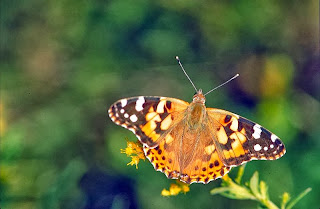On a snowy day a few weeks ago, when
I was walking through The Woods, I stopped by a hollow log along the trail and
peered inside. Blown-in snow carpeted the inside of the log, and I could see
fresh tracks, revealing that the snow within had been disturbed by some tiny
creature, taking shelter or searching for food, perhaps. It reminded me of a
conversation I had several years ago.
At the time I was working for a land
trust in rural Pennsylvania. We had just acquired a woodland property bordered
by farmland, and I was putting up a sign to identify our new preserve. The
neighbor, an old farmer, stopped by to say hello and to find out more about
what was going on with the ‘woodlot,’ as he called it. After talking with him
for a bit, he asked me when we were going to timber the woods, because it had
been a long time since the previous owner had last had it cut. If we didn't do
it soon, he said, some of the trees were just going to die and go to waste.
It was an interesting moment for me:
he had been a farmer his whole life, like his ancestors for generations before
him, and his focus had always been about the harvest and working the land.
Yet I was coming from a different perspective, focused entirely on
conserving land and protecting the natural systems. I explained that the land
trust had a different point of view that: the trees had value far beyond their
‘board feet,’ and that these trees would continue to matter to everything
around them, long after they had died.
We all know that healthy trees
provide lots of benefits, but once a tree reaches the end of its life, a
different set of processes begin. As a tree starts to die, insects will move
in, finding both food and shelter in the dead wood. Woodpeckers and other
animals will arrive to feed on the insects, creating holes in the tree; next,
other creatures including birds, bats, bees, and squirrels will make their
homes in the larger cavities. In essence, every dead tree becomes a high-rise
apartment building, garden, and supermarket, all in one. As many as 80% of the
bird species in the Eastern United States depend on dead trees at some stage in
their life. In time, a dead tree will fall, and the decaying log will retain
moisture and become a host for mushrooms, mosses, and other plants to grow.
This, in turn, provides a cool, moist home for salamanders, snakes, and toads.
Eventually, the logs will fully decay, returning the tree’s nutrients to
the Earth and enriching the forest soil.
Blog post by Jeff Devine, Land Manager





































